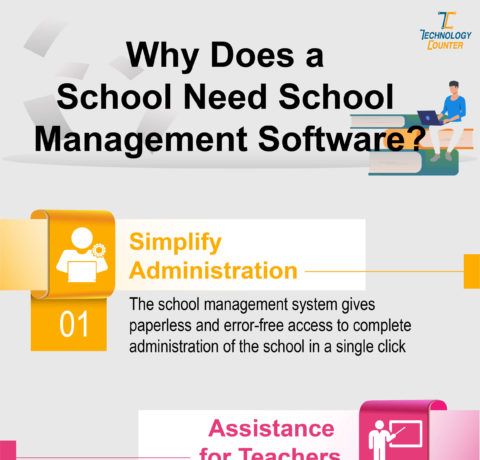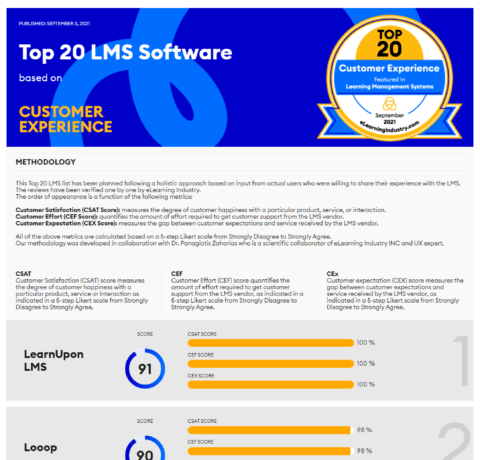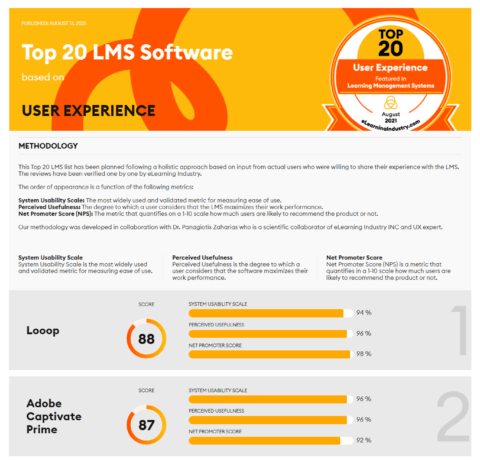Top 5 LMSs Off the Beaten Track Infographic
In recent years, one thing has become completely clear: Learning Management Systems (LMSs) are becoming more popular than ever before and they are here to stay. The most popular ones are widely used all around the world. No wonder, they make training, learning easier and more effective. Not all of them come up to all the expectations though. So you might want to consider some up-and-coming LMSs which could provide for your business needs more efficiently.
Everyone knows the big names in the LMS industry: Moodle, Edmodo, and Blackboard aren’t names you need help finding. However, beyond the recognised options in the marketplace it can get a little difficult to find a viable LMS. Which companies are serving unpopular duds and which are new, exciting, and worth taking a look at?
The Top 5 LMSs Off the Beaten Track Infographic outlines some of the up-and-coming LMSs out there. These Learning Management Systems are not quite as well known as some of the big hitters in the industry, but they’re up and coming solutions that are quickly gaining traction. They’re well worth checking out and the infographic explains you why they may be preferable over some of the more established names.
1. Adobe Captivate Prime
Considering Adobe’s experience in the eLearning industry, it’s almost shocking that they’re only just now throwing their hat in the LMS ring. Considering the time and energy Adobe has been putting into the project, Captivate Prime is set to become one of the company’s flagship products.
The Good Stuff
Adobe’s proprietary Fluidic Player offers a unified playback experience, no matter the media type. Serve PDFs, videos, slide presentations, and text documents from a single recognizable content player.
Any Downsides?
Captivate Prime was only released in August 2015, meaning that teething problems can be expected.
2. LearnDash (+Wordpress)
LearnDash is perhaps the most underrated LMS out there. It’s not a cloud-based solution or a piece of software, but instead works as a plugin alongside the popular WordPress content management system. It’s inexpensive, relatively easy to use, and plenty of developers able to create custom solutions.
The Good Stuff
Compared to other solutions that run into for the thousands of dollars, LearnDash is very affordable. It has plenty of add-ons and core features to serve an advanced learning platform.
Any Downsides?
It’s not built as an enterprise solution and shouldn’t be treated as such. It also requires you to install the product on your own server, which may be a hindrance to some.
3. UpsideLMS
Named as one of Chief Learning Magazine’s ‘Top Emerging LMS’ in 2010, UpsideLMS is not quite the new kid on the block but nevertheless quite a young name in the industry.
The Good Stuff
UpsideLMS has been given rave reviews throughout the industry, being known as an affordable solution that packs a powerful punch. The company also provides 24/7 technical support.
Any Downsides?
UpsideLMS is clearly geared to small businesses and enterprise-level corporate solutions. If you’re an educational organisation, there are better options out there.
4. Canvas
Canvas is growing so quickly that it may soon be unsuitable for this particular ‘off the beaten track’ list. In 2013-14 alone, this LMS grew by a very impressive 40%.
The Good Stuff
It’s incredibly easy to install and use. Considering its cheap price point and rich feature set makes it an excellent choice for both small and medium sized orgamsatrons.
Any Downsides?
Perhaps somewhat lacking in some features compared to established options such as Blackboard. It also doesn’t have ecommerce capabilities.
5. Matrix LMS
Founded in 2010, Matrix LMS has established itself as a solid LMS option that could soon seriously compete with the big players on the market. It’s flexible, customisable, has an ecommerce module, and is also visually impressive.
The Good Stuff
For a growing company looking for an affordable solution, Matrix LMS is ideal. It offers pretty much every feature you require, per month including gamification, asynchronous learning, and certification management.
Any Downsides?
It’s not open-source, which means that no matter what you choose you have to pay for a cloud-based solution.







You can adjust your cookie preferences here.